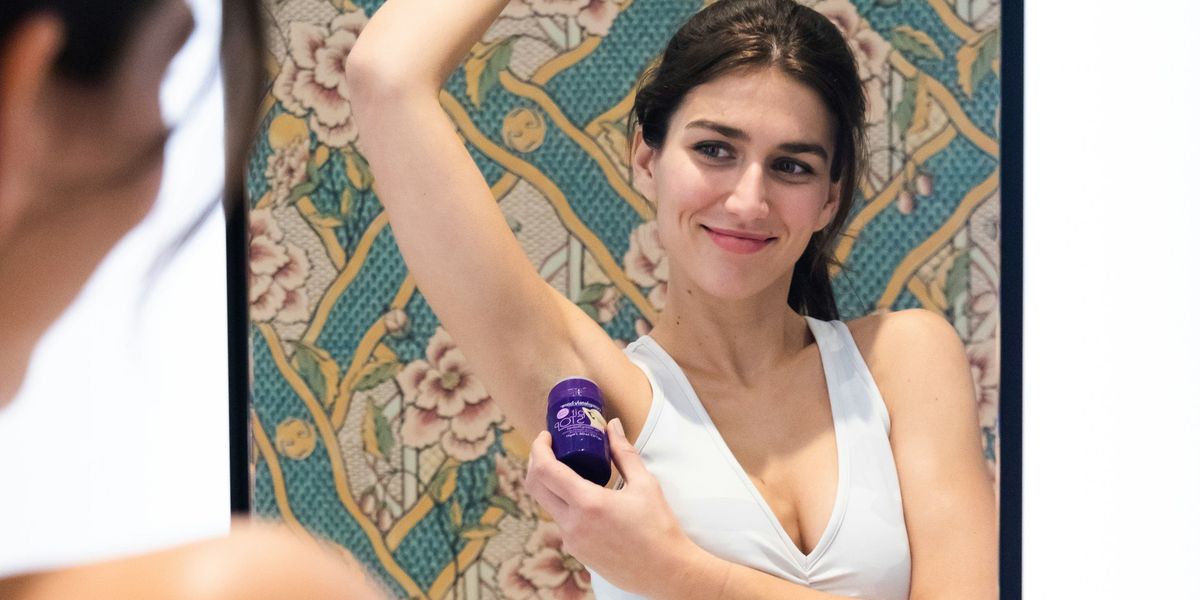
Six deodorants recently tested have detectable levels of organic fluorine, an indicator of the group of chemicals known as PFAS, according to a new report from Mamavation.
Partnering with EHN.org, the environmental wellness blog and community had 15 deodorants from 14 brands tested by a U.S. Environmental Protection Agency-certified lab and found levels of organic fluorine ranging from 11 parts per million to 32 ppm. Both “natural” and conventional deodorants had evidence of the chemicals.
Organic fluorine is a strong indicator of per- and polyfluoroalkyl substances, also known as PFAS or “forever chemicals”— which have been linked to health effects including reduced immune system function and vaccine response, developmental and learning problems for infants and children, certain cancers, lowered fertility, endocrine disruption and other impacts.
Scott Belcher, associate professor with the Center for Environmental & Health Effects of PFAS at North Carolina State University, told Mamavation that testing for organic fluorine is a good “spot-check” of products for evidence of PFAS because testing for individual PFAS compounds would miss some of other common forms of the chemicals.
The report builds EHN.org and Mamavation’s growing library of consumer products tested for evidence of PFAS, including contact lenses, pasta and tomato sauces, sports bras, tampons, dental floss, electrolytes, butter wrappers, fast food packaging, diapers and condoms.
While many are aware of PFAS pollution in water, Mamavation’s testing continues to find that we’re also exposed by the things we wear, eat, or put on our bodies. To see an in-depth look at why and how PFAS ends up in many of these products, see our investigation PFAS on our shelves and in our bodies.
What does PFAS in deodorant mean for our health?
The exposure risk to PFAS through the skin is not entirely clear, however, previous lab research by the National Institute for Occupational Safety and Health found that PFAS skin exposure poses similar health risks as ingesting the chemicals via food or water.
“Because deodorants are applied so close to the breast tissue, it’s imperative the deodorant industry clean up their act,” Linda S. Birnbaum, scientist emeritus and former director of the National Institute of Environmental Health Sciences and National Toxicology Program and scholar at residence at Duke University, told Mamavation of the new findings.
“I recommend they find this contamination and address it immediately to ensure that women and men are no longer exposed when using their deodorants.”
It’s not just PFAS — other problematic chemicals can show up in deodorants such as parabens, phthalates, various fragrances and other unknown compounds.
What deodorants are PFAS-free?
Mamavation found evidence of PFAS in popular deodorant brands such as Dr. Teals and Secret Lavender, but the good news is some deodorants, including from Truvani and Bello Tallow, were free of organic fluorine and other harmful compounds.
To see a full list of which deodorants had evidence of PFAS and which did not, check out the full report at Mamavation.
The testing is part of an ongoing effort by Mamavation and EHN.org to identify PFAS in common consumer products. Follow our PFAS testing project with Mamavation at the series landing page.
Want to know more about PFAS? Check out our comprehensive guide.

